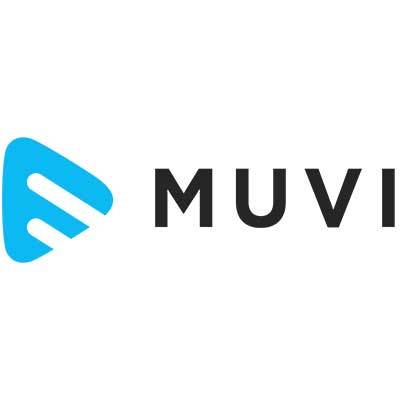Best OTT Platform
Finding the best OTT Software for your business is now faster and easier! Compare prices, reviews, features, and get a free consultation to find the perfect software.



No Cost Personal Advisor
List of 20 Best OTT Platform
Contenders | 2024
Unrelenting video & audio streaming experience acr
Innorelay is one of the leading OTT solution providers that works on your end-to-end video streaming needs. With our fully customizable approach create a unique platform that caters to multiple use cases from VOD, OTT to Live Streaming. Read Innorelay Reviews
Explore various Innorelay features, compare the pricing plans, and unlock the potential of seamless operations by selecting the right software for your business.
Features
View all Innorelay Features- Supports HD Resolution
- Media Management
- Audio Tools
- Video Streaming
- Mobile App
- Video Looping
- Bulk Uploading
- Virtual Classroom
Innorelay Caters to
- StartUps
- SMBs
- Agencies
- Enterprises
Emergents | 2024
Flexible End-To-End IPTV / OTT Platform
Setplex offer highly scalable, low-latency IPTV/OTT video solutions. Setplex has been redefining the way video is managed and consumed since 2006. We are committed to providing the best UI/UX and quality across all of our platforms. Learn more about Setplex
Explore various Setplex features, compare the pricing plans, and unlock the potential of seamless operations by selecting the right software for your business.
Features
View all Setplex Features- Video Hosting and Streaming
- Live Streaming
- Content Categorization and Tagging
- Content Delivery Network (CDN) Integration
- Advertisement Integration
- Content licensing and rights management
- Content Management System
- Multi-Language and Subtitle Support
Setplex Caters to
- StartUps
- SMBs
- Agencies
- Enterprises
Emergents | 2024
Platform by 5centsCDN
5centsCDN is a fully featured OTT Software designed to serve SMEs, Agencies. Content Delivery Network provides end-to-end solutions designed for Web App. This online Network Monitoring system offers Server Monitoring, Network Diagnosis, Bandwidth Monitoring, Web Traffic Reporting, Internet Usage Monitoring at one place. Learn more about 5centsCDN
Explore various 5centsCDN features, compare the pricing plans, and unlock the potential of seamless operations by selecting the right software for your business.
Pricing
Standard
$ 3
Per Month
Volume
$ 8
Per Month
Premium
$ 10
Per Month
5centsCDN Caters to
- StartUps
- SMBs
- Agencies
- Enterprises
Category Champions | 2024
An end-to-end OTT Streaming Solution
VPlayed is a SaaP-based OTT streaming solution that enables broadcasters, distributors & content owners to launch video & audio streaming platform to stream video/audio over the web, mobile and smart TV. Read VPlayed Reviews
Explore various VPlayed features, compare the pricing plans, and unlock the potential of seamless operations by selecting the right software for your business.
Features
View all VPlayed Features- Drag & Drop
- Content Management
- Analytics
- Virtual Classroom
- Video Capture
- Closed Captions
- Bulk Uploading
- Video Streaming
VPlayed Caters to
- StartUps
- SMBs
- Agencies
- Enterprises
Category Champions | 2024
Premium Video Streaming & Monetization Platform
GUDSHO is a premium online video platform for streaming, distribution & monetization. Brands and premium creators can find endless possibilities to propel their reach. Read GUDSHO Video Reviews
Explore various GUDSHO Video features, compare the pricing plans, and unlock the potential of seamless operations by selecting the right software for your business.
Features
View all GUDSHO Video Features- Mobile Screen Support
- Drag & Drop
- Customizable Branding
- Media Management
- Content Management
- Assessment Management
- Mobile App
- Academic / Education
Pricing
Stream
$ 149
Per Month
Stream Plus
$ 999
Per Month
GUDSHO Video Caters to
- StartUps
- SMBs
- Agencies
- Enterprises
Contenders | 2024
Fastest White label Video Streaming & OTT Platform
Vodlix is a cutting-edge, white-label Video Streaming & OTT Solution designed to effortlessly launch and manage your own on-demand streaming (VOD) services. Your all-in-one solution for launching and managing on-demand streaming services. Read Vodlix Reviews
Explore various Vodlix features, compare the pricing plans, and unlock the potential of seamless operations by selecting the right software for your business.
Features
View all Vodlix Features- Content licensing and rights management
- Content Editing and Versioning
- User Profiles and Personalization
- Content Encoding and Transcoding
- Monetization and Subscription Management
- Video On Demand
- Content Recommendation Engine
- Video Hosting and Streaming
Pricing
Standard Plan
$ 299
Per Month
Professional
$ 1199
Per Month
Enterprise Plan
$ 2999
Per Month
Vodlix Caters to
- StartUps
- SMBs
- Agencies
- Enterprises
Emergents | 2024
A SaaS platform for video creators to launch, mana
Ventuno is a SaaS OTT platform for content creators to launch their video streaming website, mobile apps (Android, iOS), and TV apps (Roku, Apple TV, Android TV, Amazon Fire, LG, and Samsung TV). Learn more about Ventuno
Explore various Ventuno features, compare the pricing plans, and unlock the potential of seamless operations by selecting the right software for your business.
Features
View all Ventuno Features- Analytics
- Event Management
- Social Sharing
- Media Library
- Closed Captions
- Media Management
- Text Overlay
- Privacy Options
Pricing
Basic
$ 299
Per Month
Professional
$ 1149
Per Month
Ventuno Caters to
- StartUps
- SMBs
- Agencies
- Enterprises
Emergents | 2024
Launch your OTT Platform in 1-Click
Muvi One is a SaaS-based OTT Platform that allows Video/Audio content owners to launch their own-branded OTT Multi-Screen Video/Audio Streaming Platforms. Learn more about Muvi
Explore various Muvi features, compare the pricing plans, and unlock the potential of seamless operations by selecting the right software for your business.
Pricing
Standard
$ 399
Full License
Professional
$ 1499
Full License
Enterprise
$ 3900
Full License
Muvi Caters to
- StartUps
- SMBs
- Agencies
- Enterprises
Emergents | 2024
Platform by KWIKmotion
KWIKmotion is a full-service online video platform solution that enables broadcasters, content owners, publishers, and OTT. It pays TV video providers to manage their multi-screen content library, curate, monetize, and serve video metadata across all platforms. Learn more about KWIKmotion
Explore various KWIKmotion features, compare the pricing plans, and unlock the potential of seamless operations by selecting the right software for your business.
KWIKmotion Caters to
- StartUps
- SMBs
- Agencies
- Enterprises
Emergents | 2024
Platform by CD TECH Innovations Pvt Ltd
Livebox is an OTT SaaS platform that allows content creators to launch video streaming websites, mobile apps (Android and iOS), and TV apps. You can also distribute your content for free or for a fee. Learn more about Livebox
Explore various Livebox features, compare the pricing plans, and unlock the potential of seamless operations by selecting the right software for your business.
Pricing
PLATINUM
$ 443
Per Month
DIAMOND
$ 819
Per Month
Livebox Caters to
- StartUps
- SMBs
- Agencies
- Enterprises
Emergents | 2024
Platform by Enveu
Enveu offers complete OTT technology solutions for building, launching, managing, and growing a video streaming business across 12+ platforms. Their flagship platform, the Experience Cloud, enables Media Publishers and Content Creators worldwide to manage their content in a centralized location. Learn more about Enveu
Explore various Enveu features, compare the pricing plans, and unlock the potential of seamless operations by selecting the right software for your business.
Enveu Caters to
- StartUps
- SMBs
- Agencies
- Enterprises
Emergents | 2024
Platform by iKala Interactive Media Inc.
Straas offers video modules for marketers, peripheral consulting, and system integration. Straas enables you to build your video applications and campaigns at scale, reducing your time-to-market. SDK/API for straightforward integration into websites, apps, and social platforms. CRM or third-party app integrations are possible. Learn more about Straas
Explore various Straas features, compare the pricing plans, and unlock the potential of seamless operations by selecting the right software for your business.
Straas Caters to
- StartUps
- SMBs
- Agencies
- Enterprises
Emergents | 2024
Platform by Accedo Technologies India Private Limited
A robust SaaS platform for developing and scaling impactful video services. You can quickly launch and scale your streaming platform using templated applications and flexible integrations. Create a unique platform by styling and configuring it with various best-practice UI templates and layouts. Learn more about Accedo
Explore various Accedo features, compare the pricing plans, and unlock the potential of seamless operations by selecting the right software for your business.
Accedo Caters to
- StartUps
- SMBs
- Agencies
- Enterprises
Emergents | 2024
Platform by StreamShark
StreamShark is a live audio and video OTT streaming platform built on leading content hosting and delivery networks and large-scale distributed real-time transcoding technology. Learn more about StreamShark
Explore various StreamShark features, compare the pricing plans, and unlock the potential of seamless operations by selecting the right software for your business.
Pricing
Standard
$ 199
Per Month
Team
$ 499
Per Month
Business
$ 999
Per Month
StreamShark Caters to
- StartUps
- SMBs
- Agencies
- Enterprises
Emergents | 2024
Platform by Vimeo, Inc
With Vimeo OTT, you can turn your video content into a full-fledged subscription service. Join the 1000s of channels that use Vimeo OTT to monetize online video. We handle the technology so you can concentrate on the content. There will be no downtime as a result of the free migration. Apps with branded in-app purchases. App creation, submission, and administration. Learn more about Vimeo OTT
Explore various Vimeo OTT features, compare the pricing plans, and unlock the potential of seamless operations by selecting the right software for your business.
Vimeo OTT Caters to
- StartUps
- SMBs
- Agencies
- Enterprises
Emergents | 2024
Platform by Alibaba Cloud US LLC
ApsaraVideo Live is an OTT live audio and video streaming platform built on leading content hosting and delivery networks and large-scale distributed real-time transcoding technology. ApsaraVideo Live offers convenient and accessible high-definition and uninterrupted live audio and video services with low latency and high concurrency. Learn more about Apsara Video
Explore various Apsara Video features, compare the pricing plans, and unlock the potential of seamless operations by selecting the right software for your business.
Apsara Video Caters to
- StartUps
- SMBs
- Agencies
- Enterprises
Emergents | 2024
Platform by Uscreen
Uscreen Video Platform is a fully featured Video Management and OTT Software designed to serve SMEs, Startups. Uscreen Video Platform provides end-to-end solutions designed for Web App. This online Video Management system offers Mobile Screen Support, Video Looping, Bulk Uploading, Brand Overlay, Analytics at one place. Learn more about Uscreen
Explore various Uscreen features, compare the pricing plans, and unlock the potential of seamless operations by selecting the right software for your business.
Features
View all Uscreen Features- Supports HD Resolution
- Video Looping
- Audio Tools
- Content Management
- Mobile Screen Support
- Video Streaming
- Privacy Options
- Self Service Portal
Uscreen Caters to
- StartUps
- SMBs
- Agencies
- Enterprises
Emergents | 2024
Platform by Soprano Design Limited
Soprano gives you the power and a platform to monetize your following through exclusive content streaming and shopping. Soprano allows you to experiment with new ideas and get paid right away. Monthly subscriptions provide a predictable and consistent revenue stream for your content. Learn more about Soprano.ai
Explore various Soprano.ai features, compare the pricing plans, and unlock the potential of seamless operations by selecting the right software for your business.
Soprano.ai Caters to
- StartUps
- SMBs
- Agencies
- Enterprises
Emergents | 2024
Platform by ViewLift
Best-in-class video platform for live, video-on-demand, and 24x7 linear streaming. ViewLift is a leading provider of end-to-end video streaming solutions for major OTT devices, the web, mobile, Smart TVs, and gaming consoles. ViewLift® provides a scalable video platform for deploying ready-made and custom streaming solutions. ViewLift's proprietary IP is a full tech stack that provides extensive functionality in a short time to market. Learn more about ViewLift®
Explore various ViewLift® features, compare the pricing plans, and unlock the potential of seamless operations by selecting the right software for your business.
ViewLift® Caters to
- StartUps
- SMBs
- Agencies
- Enterprises
Emergents | 2024
Platform by PlayBox Technology
The OTT content management system (CMS) from PlayBox Technology is the most cost-effective way to build an OTT video platform with a mix of live channels and on-demand media. Learn more about Playbox OTT
Explore various Playbox OTT features, compare the pricing plans, and unlock the potential of seamless operations by selecting the right software for your business.
Playbox OTT Caters to
- StartUps
- SMBs
- Agencies
- Enterprises
Platform by Gooseott
Goose is the most affordable OTT SaaS platform in the global market. They help you monetize your VOD + Live channels with SVOD, TVOD, and AVOD by providing a self-serving white-label platform that allows you to launch your own branded video streaming service in the most efficient way possible. Learn more about Goose
Explore various Goose features, compare the pricing plans, and unlock the potential of seamless operations by selecting the right software for your business.
Goose Caters to
- StartUps
- SMBs
- Agencies
- Enterprises
Emergents | 2024
The infrastructure for digital video
Zype provides infrastructure for digital video, with a cloud-based SaaS platform to manage and distribute enterprise-grade video across web, mobile, TV, and social media. Learn more about Zype
Explore various Zype features, compare the pricing plans, and unlock the potential of seamless operations by selecting the right software for your business.
Features
View all Zype Features- Payment Processing
- Advertising Management
- Multi-Language
- Video Management
- Analytics
- Media Library
- Workflow Configuration
- Content Import/Export
Zype Caters to
- StartUps
- SMBs
- Agencies
- Enterprises
Platform by Touchstream
Touchstream's products enable OTT operations and engineering teams to accomplish more with fewer resources. For example, Touchstream's VirtualNOC enables NOC teams to monitor and verify all components of the end-to-end OTT streaming workflow, including independent CDN verification, in real time. Learn more about Touchstream
Explore various Touchstream features, compare the pricing plans, and unlock the potential of seamless operations by selecting the right software for your business.
Touchstream Caters to
- StartUps
- SMBs
- Agencies
- Enterprises
Emergents | 2024
Platform by webnexs
With Webnexs OTT, In just 15 days, you can launch your own over-the-top OTT platform and reach a global audience. Utilize Our Decades of OTT Experience To Create A Customized Solution Based On Video-On-Demand, Live Streaming, Mobile Video, Roku Box, AppleTV, Android TV, Amazon Fire Stick, Smartphones, And Smart TV Platforms. Learn more about Webnexs OTT
Explore various Webnexs OTT features, compare the pricing plans, and unlock the potential of seamless operations by selecting the right software for your business.
Webnexs OTT Caters to
- StartUps
- SMBs
- Agencies
- Enterprises
Emergents | 2024
Platform by Dacast
Dacast Streaming-As-A-Service is a fully featured Video Management Software designed to serve Enterprises, Startups. Dacast Streaming-As-A-Service provides end-to-end solutions designed for Windows. This online Video Management system offers Brand Overlay, Bulk Uploading, Privacy Options, Closed Captions, Social Sharing in one place. Learn more about Dacast
Explore various Dacast features, compare the pricing plans, and unlock the potential of seamless operations by selecting the right software for your business.
Features
View all Dacast Features- Privacy Options
- Bulk Uploading
- Video Streaming
- Analytics
- Closed Captions
- Brand Overlay
- Social Sharing
- Video Looping
Dacast Caters to
- StartUps
- SMBs
- Agencies
- Enterprises
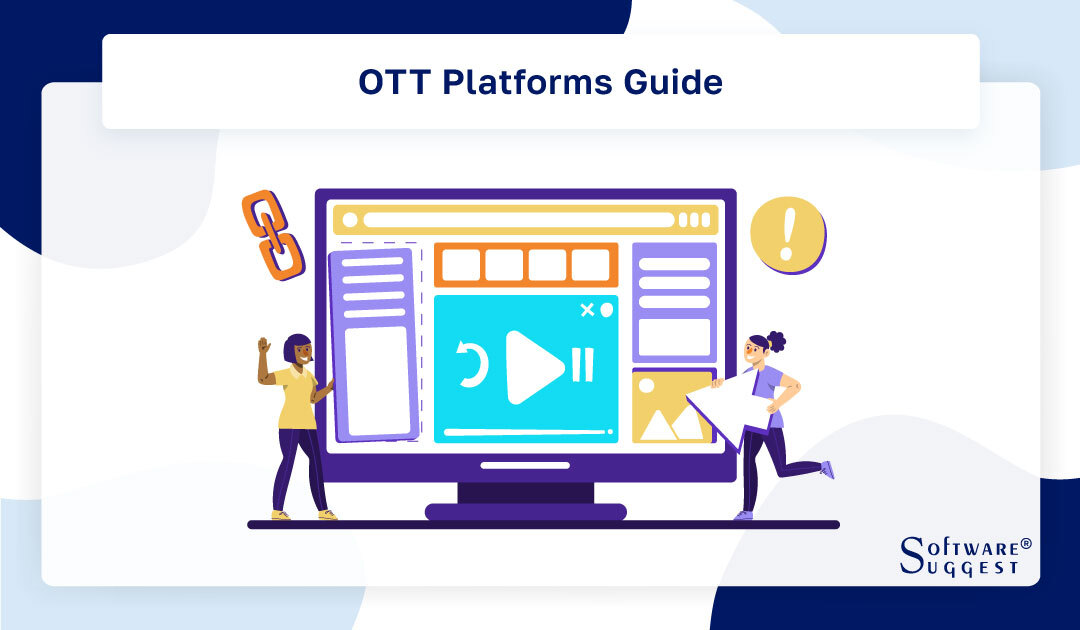
At least 3.52 billion users worldwide now stream video content from OTT streaming services, and it may cross the 4 billion mark by 2027! The market size of OTT video will reach US$ 294.90bn by the end of 2024. This proves that over-the-top applications have successfully redefined how video content is distributed and consumed.
However, it’s never easy for content creators to develop their branded OTT streaming application from scratch. Thankfully, OTT platforms are here to help! OTT platforms help schedule, release, distribute, and manage video content effortlessly. You can also develop your white-labeled streaming platform without coding using these OTT software solutions.
In this article, we will tell you about the best OTT platforms in 2024, their benefits, their different types, and more! So, keep reading.
What is an OTT Platform?
An OTT platform, the Over The Top platform, helps you distribute your video content directly over the internet. Hence, you don’t need to follow the traditional methods of video content delivery, like cable and satellite TV. These platforms are your gateway to the internet-based media distribution method.
These OTT platforms are often associated with a network of cloud servers called the CDN (Content Delivery Network). They also comprise built-in encoders and transcoders, which help process the videos.
So, when you upload the video on an OTT platform, the built-in encoder and transcoder encode the video and pack it in a digital video format that is suitable for internet-based streaming. Best OTT platforms use multi-DRM technology to encrypt video content. Finally, the processed video is distributed over the CDN, which your end user can access using a streaming platform.
Some OTT software helps you develop your streaming platform too! So, an OTT platform is software that helps you develop your streaming platform or application, upload and manage video to it, distribute the video over the CDN, and secure the video content through DRM.
Apart from these basic functionalities, the best OTT platforms also help you track your videos' performance, monetize the videos, and engage with your audience. Some of them let you live stream too!
Benefits of Using an OTT Platform
An OTT platform has multiple benefits for content creators. They can deliver the best video streaming experience to their end users, who can access a wide range of original and exclusive content. A global consumer base helps increase the revenue of content creators by many folds.
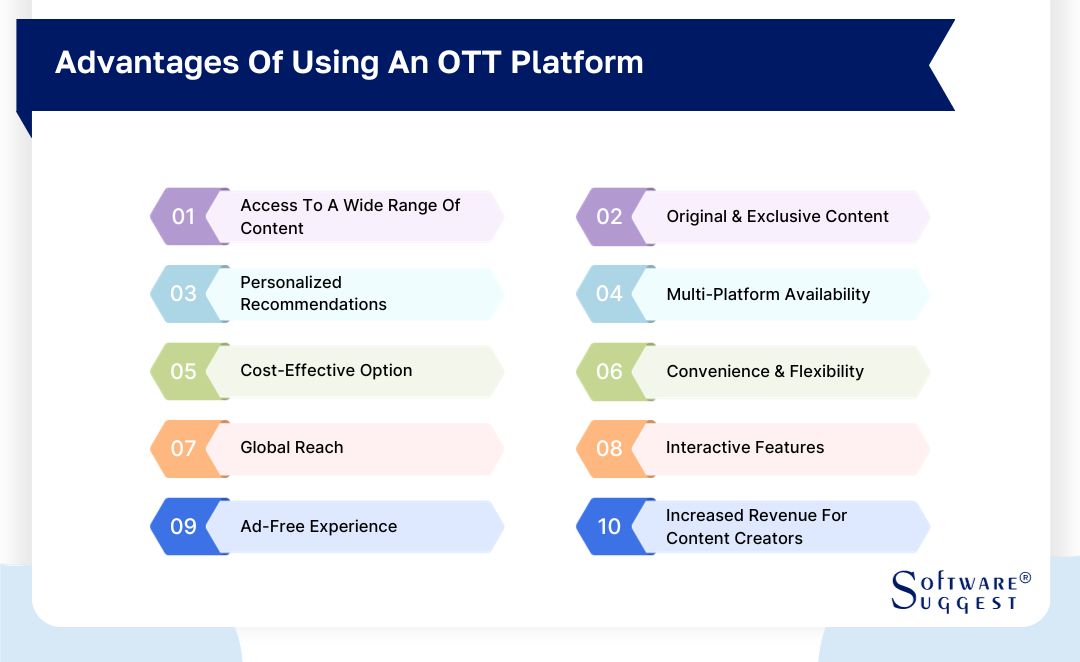
-
Access to a Wide Range of Content
Your viewers can access a wide range of content from across the globe, from movies, short videos, music videos, news, sports videos, and much more! On top of that, they can enjoy these videos on multiple devices anytime they want.
-
Original and Exclusive Content
OTT streaming services are known for their original and exclusive content, which comes straight from the content curators. These original videos are fresh and unique, leading to greater audience engagement.
-
Personalized Recommendations
OTT platforms use recommendation engines nowadays to deliver personalized recommendations to users. These recommendation systems study the viewers' streaming preferences and recommend videos they might like. It keeps the viewers hooked to your platform for longer, increasing revenues.
-
Multi-Platform Availability
Most OTT platforms operate on multiple ecosystems, including Windows, Mac, etc. Moreover, most OTT platforms help you create streaming applications for multiple platforms and operating systems, including iOS, Android, Roku, WebOS, and more!
-
Cost-Effective Option
Compared to traditional video content delivery methods, OTT platforms are cost-efficient. Also, using an OTT platform to develop your streaming application needs lesser upfront investment when compared to building it from scratch.
-
Convenience and Flexibility
Using Over-The-Top software, your users can stream video content on any device over the internet. They are extremely easy to use for content creators and end users. Also, they allow you to stream video content from anywhere, anytime, across the globe.
-
Global Reach
You can use an OTT platform to deliver your content to a global audience base. Viewers sitting in any part of the world can stream your content. Due to globalization, your revenue stream shoots up rapidly.
-
Interactive Features
Top OTT platforms offer multiple user-friendly interactive features like CTA cards, wishlists, favorites, likes and shares, and more! These interactive features help in achieving higher user satisfaction. They also help in understanding the content preferences of your viewers.
-
Ad-Free Experience
Frequent ads in between videos often irritate your viewers. You can let your subscribers enjoy ad-free content. In this way, you won’t be able to generate ad revenues, but the subscription revenues will help compensate. This OTT business model is quite popular globally.
-
Increased Revenue for Content Creators
OTT platforms increase the revenue of content creators by many folds. Firstly, they expand their consumer base significantly, as the content is available to global users. Secondly, content creators get more freedom to create diverse types of content and apply different forms of monetization to their content.
Different Types of OTT Platforms
OTT platforms can be of many types depending on the monetization model used and the content delivered. Let’s take you through the major types of OTT platforms individually.
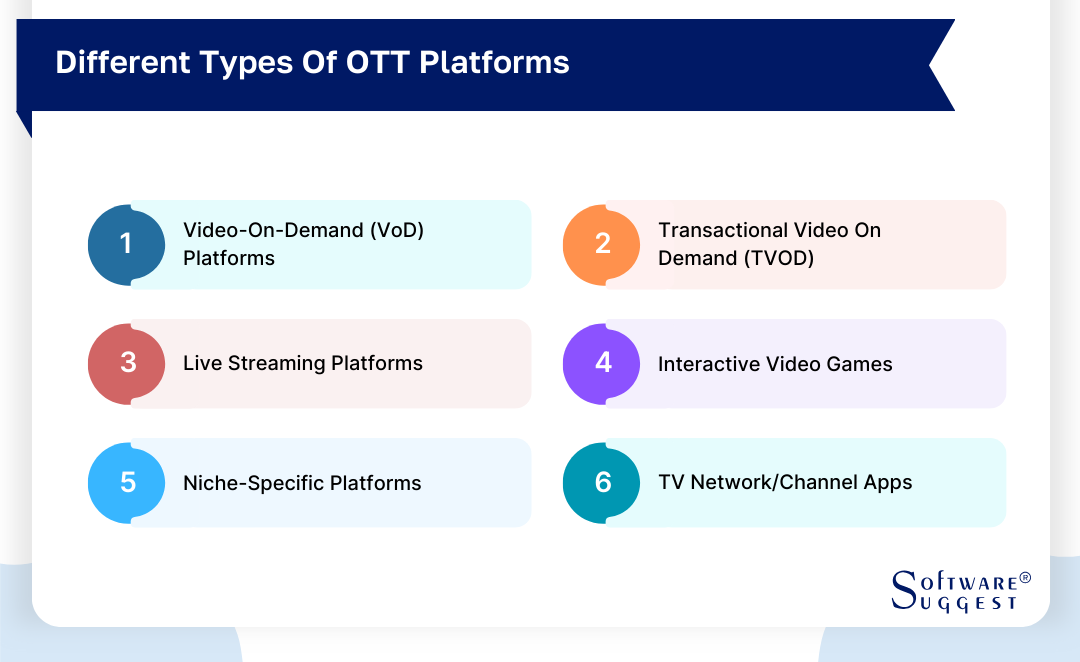
-
Video-on-Demand (VoD) Platforms
Video-on-Demand (VoD) platforms deliver pre-recorded video content. The users can stream these videos anytime they want to post their release. These platforms often use subscription-based monetization called SVoD or subscription video-on-demand. However, they can also offer ad-supported video streaming, called AVoD or advertising-based video-on-demand.
-
Transactional Video on Demand (TVOD)
The TVoD platforms use the pay-per-view (PPV) monetization model. Hence, the viewers need to pay a specific amount each time they stream content from these platforms. Since every view incurs a transaction, that is why such platforms are called transactional video-on-demand. Like SVoD and AVoD, TVoD is also a subtype of VoD.
-
Live Streaming Platforms
Live streaming platforms deliver live video content. Hence, in this case, the video content is distributed instantly after it is recorded. These OTT live streaming platforms often include built-in encoders and CDN networks so that the raw video feed can be processed and distributed instantly.
-
Interactive Video Games
Interactive video games, also known as interactive storyboards, are story-based interactive platforms where you can choose the story's events. You play a character in the story and make decisions that define the storyline and ending of the story.
-
Niche-Specific Platforms
Niche-specific OTT platforms deliver content specific to a specific niche, like health and fitness, finance, career, education, etc. These platforms often target a specific audience base that can benefit from this type of information.
-
TV Network/Channel Apps
Many ruptured TV channels and broadcast networks operate their streaming platforms. These platforms usually cover all the content broadcasted by those channels. However, some of these apps also deliver some original content that is not available on TV.
Types of Users of OTT Platforms
The type of OTT platform to choose depends on the user's use. Different users have different business needs. Hence it’s important to understand the intent of the users. Let’s explore some of them.
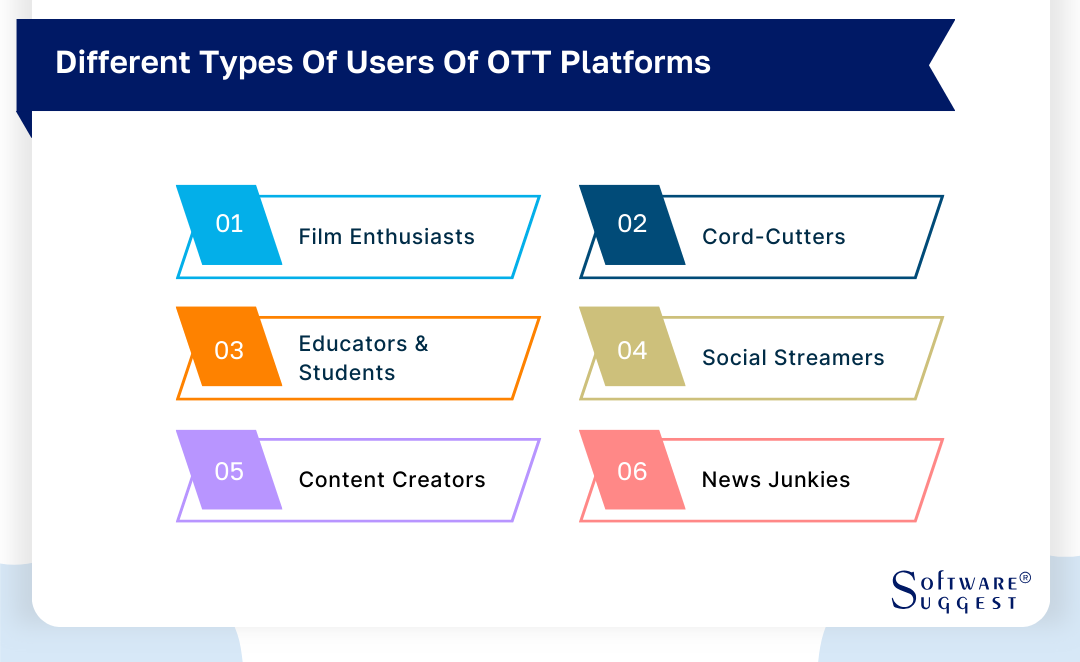
-
Film Enthusiasts
Keeping a film enthusiast away from brand-new and interesting movies is very difficult. Nowadays, many movies are being released directly over the top, which has increased the craze of streaming platforms among film enthusiasts.
So, the requirement of a film enthusiast is simple. They want to stream the movies from anywhere, anytime around the day, and enjoy high-quality video and audio content.
So, they prefer platforms that offer lower buffering, smooth streaming at low internet, high-quality video content (preferably HD and 4K), and Dolby surround sound.
-
Cord-cutters
Cord-cutters want to say goodbye to traditional cable television. So, these people often migrate to internet-based streaming solutions like OTT and IPTV.
They want to stream different types of content like movies, news, live sports, and others without any need for cord-based cable TV. So, these viewers often focus on the diversity of the content available on your platform.
-
Educators & Students
Educators nowadays provide online tuition. These online lessons use video or audio content to explain different topics. Due to this reason, many eLearning businesses and educators develop video streaming platforms where they can publish video lectures for their students. The students access these videos from there and continue their learning.
-
Social Streamers
Social streamers like to stream videos (both live and on-demand) across their social media platforms. These videos can be of many types. Some talk about society, and culture, any special event. and try to create social awareness for a cause, while others are just random videos.
So, they need OTT platforms that can be integrated with multiple social media platforms. Also, many streamers want to broadcast their content simultaneously on all these platforms.
-
Content Creators
The content creators create video content and look to generate revenues from it. So, their main focus is to monetize their content and engage with their viewers to convert them into loyal subscribers and long-time content consumers.
That is why they look for OTT platforms with enough flexibility in monetization models. Many reputed OTT software enable them to create multiple subscription plans. They can also offer ad-based free content to their viewers, with server-side ad insertion and client-side ad insertion.
-
News Junkies
Nowadays, almost all news channels simultaneously broadcast live news feeds online. News lovers can stream the news feed on multiple devices anytime, anywhere.
For news streaming, news broadcasters often need an OTT platform to broadcast live content with very low latency. Also, most news channels want to save those live feeds to reuse these recorded videos later as VOD content.
Features Offered by an OTT Platform
Any OTT platform must offer basic features like a content library, video CMS, and subscription management. However, the best OTT platforms offer advanced features like adaptive streaming, DVR-enabled live streaming, multilingual platform, multi-DRM security, dynamic watermarking, multi-device compatibility with device restrictions management, and more.
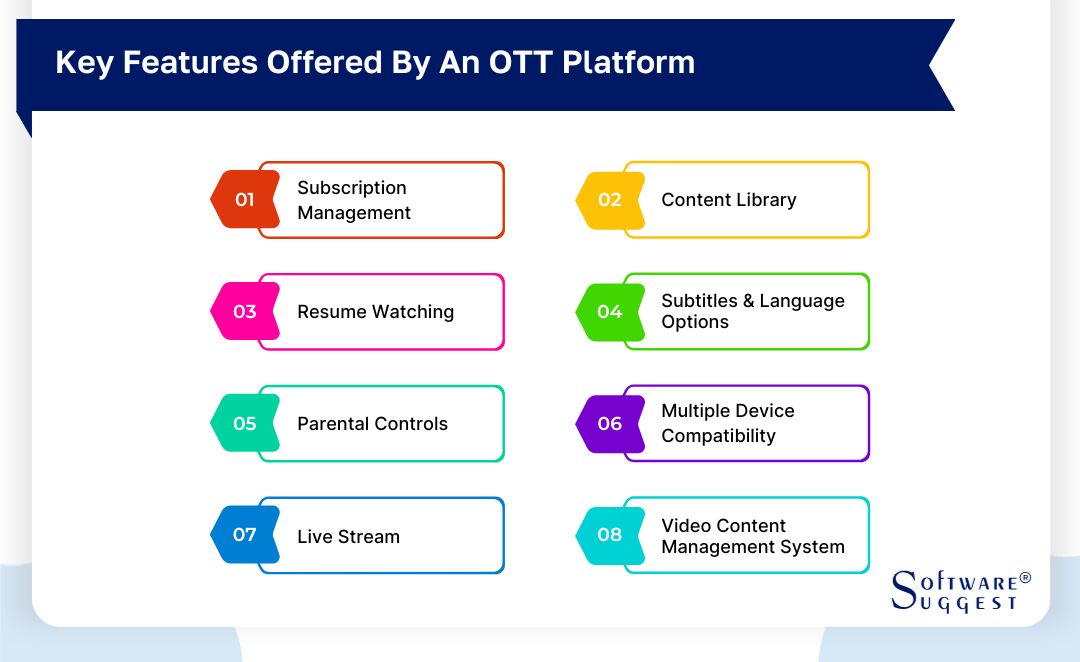
-
Subscription Management
The subscription management feature lets you manage subscription plans, subscribers, subscription fees, and the content that can be accessed after buying the subscription. Some OTT tools let you add multiple subscription plans with different sets of content available under them.
-
Content Library
The content library is the repository of all video content available on your streaming platform. You can use this content library to manage and modify existing videos, their metadata, and the additional information and documents available with them, like cast and crew, recipe PDFs, etc.
-
Resume Watching
The pause and resume feature lets your users pause the video in between and then resume it from there after some time. They are mostly available for VoD content, but some very good OTT platforms also offer this feature for live videos. In such cases, it is called DVR-enabled live streaming.
Also, some OTT platforms let users resume watching videos from the episode where they left the last day. This resume-watching feature is extremely beneficial for web series and nested video content.
-
Subtitles and Language Options
Adding subtitles to a video helps people understand your content better. Anyone who is not that familiar with the language of the content can read the subtitles alongside watching.
Apart from subtitles, many OTT platforms nowadays offer multiple language options to users. When they choose the language of their choice, they can view the content available in that language.
-
Parental Controls
Parental controls let you decide what content your kids can view. It allows your viewers to ensure that their child can access content appropriate to their age. It helps protect the kids from explicit content and other security threats.
-
Multiple Device Compatibility
Most OTT platform software lets you create streaming platforms that can operate on multiple devices and operating systems. Also, many OTT platforms can be accessed simultaneously on multiple devices through a single account. However, in many OTT platforms, the admins can set device restriction rules restricting unlimited simultaneous streaming on many devices.
-
Live Stream
Nowadays, most top OTT platforms support both on-demand and live streaming. It lets the viewers enjoy live videos and events like live sports matches, live news broadcasts, live music concerts, etc.
-
Video Content Management System (CMS)
A video content management system lets you manage everything about your video content over a single dashboard. You can upload and edit the videos and their metadata, add subtitles, set the monetization models, track content performance, and perform many more operations that can be performed through the CMS.
How to Select the Right OTT Platform?
To select the best OTT platform, you must verify a few things first, like their customer support, pricing plans, monetization options, cloud hosting, etc. Apart from these common objectives, you might look for features specific to your business needs, like live streaming and device compatibility.

-
Technical Support
Content creators might get stuck operating the OTT platforms. A good technical support team can help you out in such situations. Some OTT platforms like Muvi are known for their exceptional technical support.
-
Pricing and Subscription Plans
The pricing of the OTT platform must be within your budget. You might get OTT software options as low as US$ 25 per month. However, such plans have certain limitations. If you have a good amount of content to be distributed, it will be better to go with higher plans.
-
Live Streaming
If you want to broadcast live content on your streaming platform, you will have to check whether your OTT solution provider offers live streaming solutions. Some top OTT solutions offer built-in live streaming support, while others add this feature on special requests. You should always choose a built-in option.
-
Device Compatibility
Your audience might like to stream multiple devices like smartphones, tablets, or smart TVs. So, the OTT tools you choose or build must run on multiple devices and OS environments. Best OTT solutions like Muvi One let you develop streaming applications for 16+ OS environments.
-
HLS Video Player
HLS is the most widely used streaming protocol across the globe. Also, it is compatible with most modern browsers and devices. A built-in HLS video player lets you stream HLS videos without any external or third-party player.
-
Platform Integration
Many video streaming companies must integrate multiple payment gateways, video editing tools, live-streaming tools, etc., into the OTT platform. Hence, the chosen OTT software must allow easy integration with all these third-party solutions.
-
Compare OTT Platform Products
As a user, you must compare multiple OTT platform products before deciding which one to buy. This is because each platform has certain USPs that others might miss. So, you must see which platform satisfies your business needs the most.
-
On Cloud/ On-Premise
Cloud hosting and storage give your platform more flexibility and reliability. Cloud-based servers can tackle multiple streaming requests, a large number of concurrent events and viewers, and offer enhanced security. Hence, if not extremely necessary, you should always go for cloud-based platforms rather than on-premise setups.
-
Multiple Monetization Models
With time, the preferences of viewers have diversified. Earlier, viewers, in general, were ready to spend more to get ad-free content. But nowadays, many viewers are ready to see relevant ads if they get to watch the content for free.
Multiple monetization models already existed for many years, but this sudden rise in the popularity of ad-supported video streaming has made it even more important. Content creators now offer multiple monetization options like subscription, membership, pay-per-view, and ad-based free streaming to remain competitive.
That is why, when choosing an OTT platform, ensure it supports most of these monetization models.
Top OTT Platforms in 2024
|
Name
|
Free Trial
|
Demo
|
Pricing
|
|---|---|---|---|
|
14 Days |
Yes |
Starting price at $399/month | |
|
7 Days |
Yes |
Starting price at $2.5(1 TB of bandwidth) |
|
|
7 Days |
Yes |
Starting price at $199/month |
|
|
7 Days |
Yes |
Custom Pricing |
|
|
7 Days |
Yes |
Starting price at $25/month |
Many OTT platforms are in the market, but not all are suitable for professional video streaming. So, to help you choose the right platform, we have hand-picked the top OTT platform in 2024. This section will explain why we like them, their pros and cons, and their pricing structure.
1. Muvi
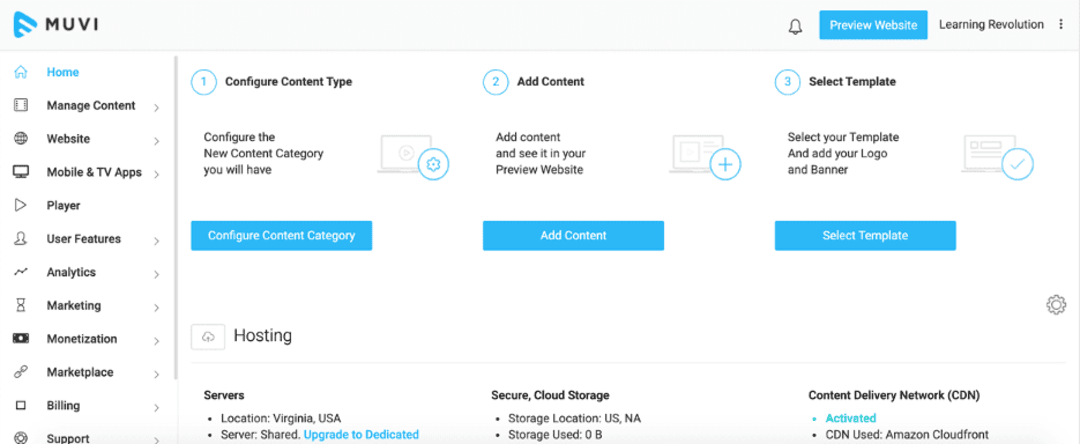
Muvi One is one of the most popular OTT platforms, which provides you with all the necessary features to launch your own OTT platform out of the box. Along with a web-based streaming platform, Muvi One lets you launch your own OTT apps for Android TV, Apple TV, Roku TV, and 12 other OS ecosystems without coding. Developers get API access, which makes customization easier.
Launching your OTT platform with Muvi One will get built-in multi-DRM, dynamic watermarking, geo-blocking, and more! Secure streaming is one of the biggest USPs of Muvi One. Along with security, a built-in CDN server network ensures ultra-low latency and minimum buffering.
Along with long-form videos, you can also add short videos like YouTube shorts using Muvi Minis. You can also onboard content partners, who can upload and manage video content on your behalf. Muvi Kart enables you to sell merchandise and products related to their content over the same platform.
- Cloud hosting using multi-CDN server
- High-quality 4k streaming
- Cloud encoding and transcoding
- DRM security
- Content partner portal
- Nested content
- Supports user-generated content
- AI recommendation engine
- Multilingual platform support
- Visual designer
- Multiple design templates
- HTML5 video player
- Users can try their Android app within 5 minutes of submitting the app development form.
- World’s first OTT Visual Designer lets users design beautiful streaming websites and apps for TV and mobile devices.
- Users can enable comments and ratings to receive feedback from their viewers.
- Muvi One supports multiple monetization models, including subscriptions, advertisements, pay-per-view, PPV bundles, coupons, and vouchers.
- Ensures high-quality streaming with 4K videos and Dolby atmos support.
- Muvi One offers a 14-day free trial without any credit card requirement.
- Higher plans are expensive.
- Users will have to pay additional fees to enable UGC, live chat, Kart, and some other features.
Pricing
Muvi One currently offers the following pricing plans:
- Standard Plan will cost users US$ 399 per month.
- For the Professional Plan, users need to pay US$ 1499 per month.
- Their Enterprise Plan will cost users US$ 3900 per month.
2. 5centsCDN
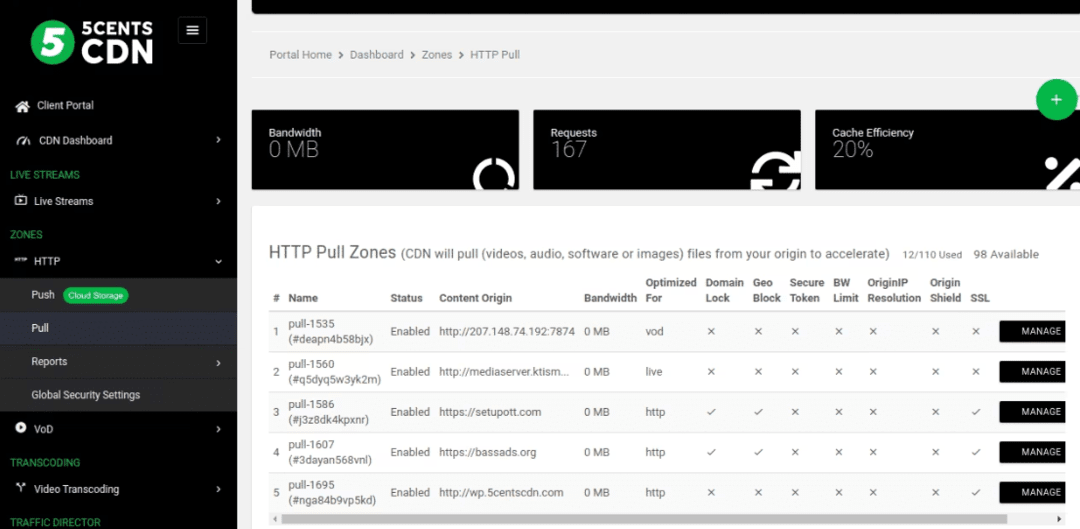
5CentsCDN is a CDN solution specialist that offers cloud hosting solutions for OTT Platforms. It offers OTT services that let you deliver on-demand content to PCs, tablets, smart TVs, and mobile devices.
It also helps those streaming platforms migrate effortlessly to the CDN server network. It offers live-streaming solutions too! You can manage content, subscriptions, and billing using their OTT software.
- Content delivery network
- Live streaming
- Webcasting of content
- IPTV solution
- Live encoding
- Workflow management
- Reports and stats
- Multi-protocol support, including HLS, RTMP, and RTSP
- Multi-streaming
- Live recording
- As the name suggests, 5centsCDN is a CDN specialist, so users will enjoy the best cloud storage solutions for their OTT platform.
- The customer support of 5centsCDN is quite renowned.
- 5centsCDN also has tools and solutions for mobile and TV apps like Android and Roku.
- The instant live-streaming solution of 5centsCDN is very easy to use.
- Users can use the services for multiple purposes, from broadcasting a live event to broadcasting TV shows 24x7.
- The primary product of 5centsCDN is the CDN, OTT solutions are additional.
- Broadcasting solutions are quite basic. Advanced features are lacking.
Pricing
5CentsCDN charges only for CDN services in their pricing plans. Users will have to pay additional costs for additional services, as per their requirements.
For the CDN, 5CentsCDN has the following pricing plans:
- Users will get 1 TB of bandwidth for the standard plan at US$ 2.5.
- The volume plan will cost users US$ 7.5 per TB.
- For the premium plan, users will get 1 TB of bandwidth at US$ 10.
- The enterprise plan will cost users US$ 15 per TB.
For the additional OTT-specific solutions, the additional costs are as follows:
|
Feature |
Price |
|
Video Encoding |
US$ 10/month for 1K output minutes |
|
Live Recording |
US$ 10/month for 50K minutes |
|
SD Live Transcoding |
US$ 12.5/profile per month |
|
HD Live Transcoding |
US$ 25/profile per month |
|
Video Player |
US$ 5 per MM HITS |
3. StreamShark
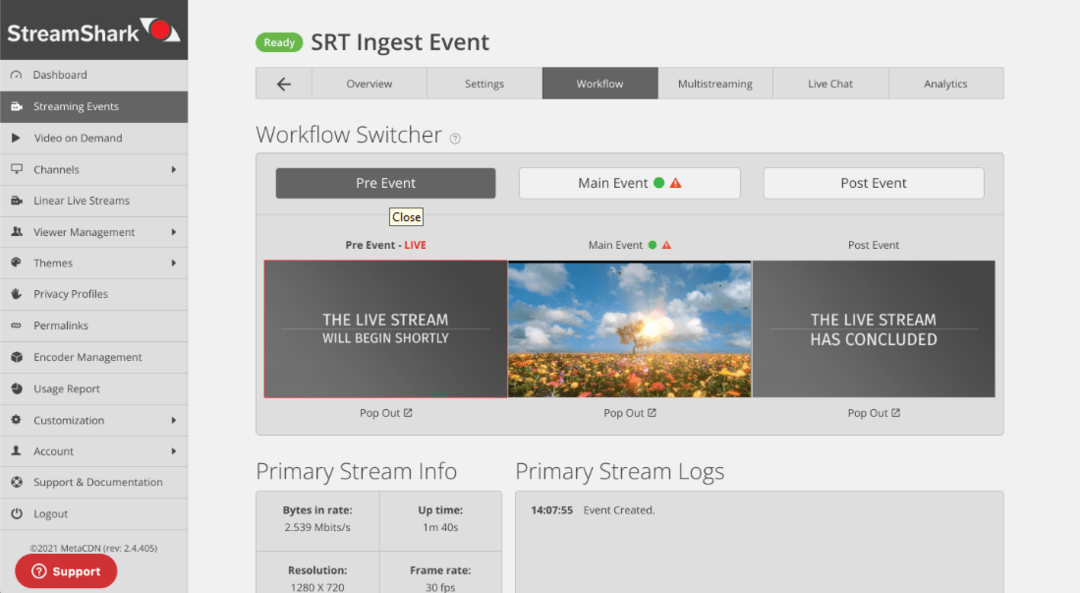
StreamShark is an end-to-end live streaming and video-on-demand solution provider, that has been offering reliable streaming services for over 10 years.
It is one of the most reliable OTT live streaming platforms offering secured streaming with a smooth viewing experience.
They help big enterprises create branded channels for their business needs and events. Organizations can significantly reduce the external bandwidth used in their live streams using their peer-to-peer live streaming feature. This technology turns the user’s computers into distributor nodes.
- AES-128 standard encrypted secured streaming
- Single sign-on
- Encoder management
- Pre-recorded live video scheduler
- Viewer management
- Multi-streaming
- Live coverage workflow
- New users get free trials to try their solutions.
- StreamShark has specialized solutions handcrafted for large-scale enterprises.
- Users get detailed analytics and reports to understand the intent of their users.
- The 360-degree video player is also compatible with mobile devices, desktops, and VR headsets!
- StreamShark delivers 4K live streams at 60FPS.
- StreamShark focuses more on live streaming.
- When compared to the features, the pricing plans are expensive.
Pricing
StreamShark offers the following pricing plans:
- The standard plan starts at US$ 199 per month.
- For the team plan, users need to pay US$ 499 per month.
- The business plan starts at US$ 999 per month.
4. JW Player

JW Player offers end-to-end video broadcasting solutions for broadcasters, content publishers, and businesses. Their embedded video players can run on any screen and deliver fully secured streaming with studio DRM.
Their solutions are suitable for multiple business and streaming needs like live streaming, VOD streaming, sports streaming, church streaming, etc. They also offer specially crafted solutions for public broadcasters and news broadcasters, who broadcast content on a massive scale.
In short, JW Player is a complete video streaming solution that lets you deliver, play out, engage, and monetize your videos on a massive scale.
- Both live and VOD streaming
- Studio DRM
- Web player
- OTT apps
- Multiple monetization models - SVOD, TVOD, AVOD.
- Auto-insert videos
- Video recommendation
- Real-time analytics
- JW Player offers powerful customer engagement features that can help users drive more views.
- Users can insert videos to all of their web pages automatically.
- The analytics section offers useful insights about the uploaded videos, including the devices for playing the videos and real-time video activity.
- Using identity management, users can manage their subscribers very easily.
- JW Player allows global payment processing.
- Users get a 30-day free trial period before their first payment.
- Not good for playing high-resolution content (especially 4K).
- The technical support of JW Player might be slow at times.
Pricing
JW Player follows a custom pricing model where experts will talk to users, understand their needs, and then curate a specific payment plan. Before that, users get a one-month free trial to try the product.
5. Cincopa

Cincopa is a renowned video hosting software that offers world-class features like Digital Assets Management, Video API, integration with 3rd-party apps, video CDN, 4K video streaming, and more!
They offer built-in solutions for enterprises, content creators, and eLearning instructors. You can deliver OTT videos, eLearning courses, and enterprise-grade video streaming experiences using their solutions.
They help you host your videos, manage your video assets over a single platform, enhance them, publish them, and analyze their performance.
- CincopaShare mobile app
- Built-in video CDN
- Live streaming
- Video SEO and Addons
- Webpage builder
- Stream on TV
- Integrate with HubSpot, Slack, WordPress, Zoom, Mailchimp, and many other apps.
- Add videos to eCommerce platforms and marketing campaigns.
- Real-time analytics help users analyze the performance of your content.
- After uploading the video once, users can broadcast it anywhere.
- Users can stream the videos over multiple devices.
- Cincopa offers a 30-day free trial for new users.
- The starting plan offers fewer features.
- Tooltips are not very good.
Pricing
Cincopa currently follows the pricing plans given below:
- The Plus plan starts at US$ 25 per month.
- The corporate plan will cost users US$ 99 per month.
- Users must pay US$ 350 per month for the enterprise plan.
Challenges Faced in OTT Platforms
As the world of video streaming is rapidly changing, new technologies are bringing new challenges to the OTT business. With the evolution of smart TVs, connected set-top boxes, and streaming sticks, the way people access OTT content is changing. This change is leading to challenges related to content compatibility, content processing, device fragmentation, and more!
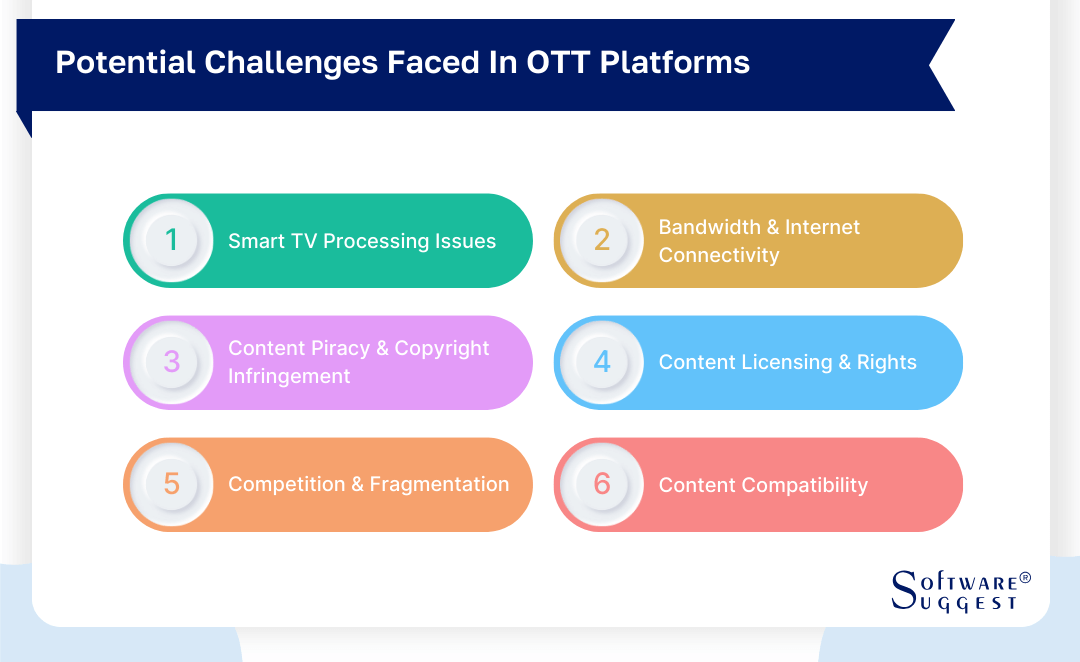
-
Smart TV Processing Issues
All the smart TV operating systems have certain application guidelines, which every OTT software must follow. If you don’t follow them, your application will face multiple processing issues, and sometimes the store might even reject it.
Also, as many new smart TV OS are emerging or getting upgraded every day, very few experienced developers are developing these apps. Due to a lack of experience, smart TV app developers often commit fatal mistakes in the framework and architecture of the apps.
Even when the streaming platform is successfully developed and published, the end-users might face multiple issues. The major issues faced by the users include issues related to Wi-Fi connectivity, frame rate, sound quality, etc.
-
Bandwidth and Internet Connectivity
The bandwidth needed to consume premium-quality video content depends on the size of the screen you are using. If the screen size increases, the quality of the videos will decrease automatically until and unless your internet provider supports the usage of higher bandwidth.
One solution to have a temporary fix for this issue is adaptive bitrate streaming. The streaming platforms can encode the videos into video chunks of multiple resolutions. The server will automatically pick the video quality that suits the bandwidth availability of the users during streaming. Popular OTT solutions like Muvi One offer this feature.
-
Content Piracy and Copyright Infringement
Stealing and piracy of OTT content have become serious causes of concern in recent years. Most leading OTT streaming services have faced such issues in recent years. That is why security-based OTT technology, like multi-DRM and digital watermarking, is growing popular daily.
Multi-DRM is crucial for secure streaming, as it prevents unwanted users from accessing OTT platforms. During encoding, the content is locked using a key and hence can only be decoded using a suitable DRM key.
Digital watermarking helps protect against screen recording attempts. Dynamic watermarks keep floating across the screen and are difficult to remove from the screen recordings.
-
Content Licensing and Rights
Content licensing and copyrights make any streaming service the legal distributor of any video. The streaming services can stream only the content for which they have legal rights.
In recent years, the value of content licenses for premium content has skyrocketed. As a result, multiple disputes have emerged over streaming such content.
-
Competition and Fragmentation
Over the years, the devices used for streaming OTT content have diversified. In the beginning, smartphones were predominately used for streaming OTT content. Hence, most of the streaming platforms focused on mobile devices only.
But currently, smart TVs and tablets are quite popular video streaming devices. However, only a few streaming platforms have OTT apps for smart TVs. That is why such platforms are leaving their competitors behind.
Another major challenge is device fragmentation. Even smartphones and smart TVs run on multiple OS, each with multiple versions. Hence, you must frequently create OS-specific applications and upgrade them to higher versions.
-
Content Compatibility
Is your content compatible with the OTT platforms? To ensure that, please follow the specific video formats and encoding profiles. Though many video formats are available, you must choose between MP4, MKV, AVCHD, and AVI for an OTT platform.
Some very good OTT Platforms like Muvi One let you upload videos in any format. Their built-in encoder and transcoder convert them into the MP4 format.
Latest Market Trends Relating to OTT Platform
In recent years, new streaming ecosystems like streaming sticks, IPTV boxes, gaming consoles, and wearables like VR headsets have given a new dimension to streaming. Also, the language boundary is slowly fading, as most of the online video content is now localized in multiple languages. As a result, the demand for original content is increasing in all languages across the globe.
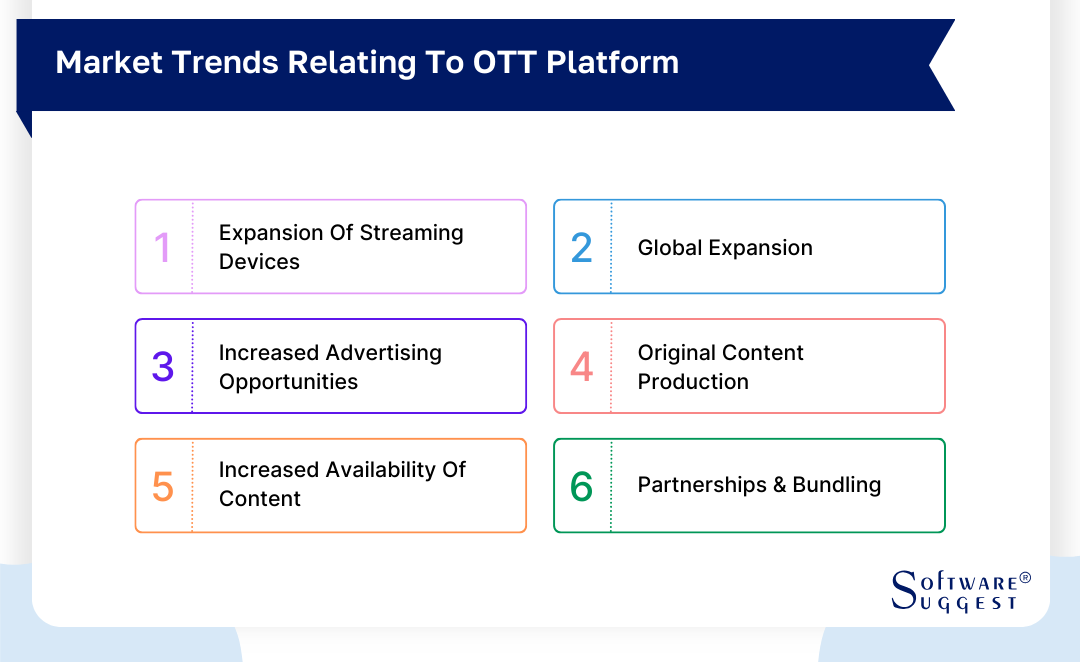
-
Expansion of Streaming Devices
Streaming devices have expanded rapidly in the last few years. This expansion is multi-lateral. The already-present streaming devices like mobile devices and smart TVs have developed in terms of improved OS version, UI, and UX. Along with that, devices like gaming consoles have presented opportunities to stream OTT content through them.
Also, the global cord-cutting trend has led to a rapid increase in the popularity of streaming sticks, streaming cubes, and IPTV boxes. Fire TV, Apple TV, Roku, and others are quite popular nowadays. All these streaming ecosystems run on different OS and need different forms of OTT applications.
-
Global Expansion
As internet access expands globally, more people are inclined towards OTT content. Now, the content is not limited to a specific region only. Audiences from across the globe can access it. The subtitles help people understand the content easily.
Also, people are now using voiceover services to content the audio of the content into other languages, keeping the video intact. These types of content are becoming quite prevalent globally.
-
Increased Advertising Opportunities
OTT advertising has come a long way. Currently, OTT advertising forms the major proportion of OTT revenue every year. In 2024, OTT advertising revenue is expected to reach US$ 176.60 billion in 2024.
This increase in revenue is running hand-in-nad with advancement in ad insertion techniques for OTT videos. Nowadays, many OTT platforms are using SCTE markers for ad insertion.
-
Original Content Production
Earlier, people used to watch remade content happily, But nowadays, people are inclined towards original content only. Streaming platforms have started producing original and unique content to rapidly fulfill the viewer's demands.
-
Increased Availability of Content
With the rapid increase in content creation, the availability of content has increased manifold. The best part is, nowadays, ample content is available in multiple languages, catering to multiple genres.
-
Partnerships and Bundling
Bundling refers to those SVOD or TVOD content pricing plans that offer access to a specific collection of content. For example, a streaming platform might have a separate SVOD bundle for superhero movies, giving access to all the superhero movies available.
Many OTT platforms enable content creators to do partnerships with other content creators. In doing so, the content partners can publish their content on the platform developed by the content creators. Hence, both parties get a platform to generate revenue from their content.
What is the Cost of OTT Software?
If you are looking for an OTT platform software that caters to specific solutions like CDN or video player, you might get what you want at lower prices, starting from US$ 20 onwards.
But, if you are looking for an end-to-end OTT tool that lets you develop your own OTT platform and streaming applications without coding, you might need to pay a higher price. The cost of such over-the-top software starts at around US$ 200.
Conclusion
Amid the rapidly growing trend of cord-cutting and the popularity of original content, OTT platforms have become the need of the hour. This OTT platform list provided here will help you choose the right software to create your own streaming platform and stream premium videos across the globe in multiple languages.
Do verify the features before choosing one, as every OTT tool has pros and cons. But in general, you must choose a platform that offers built-in CDN, DRM, the ability to build streaming apps for multiple OS environments, and a well-organized video library with analytics.
Related Articles
By Countries







